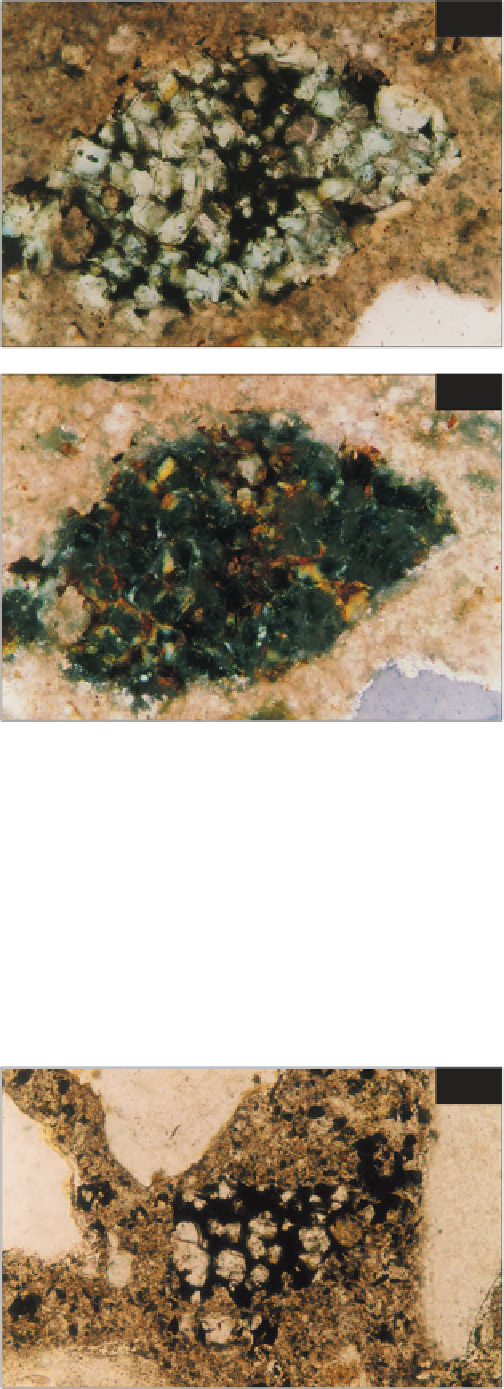Geoscience Reference
In-Depth Information
165
silicates (C
3
S and C
2
S) with the other clinker constituents
(C
3
A and C
4
AF) forming the fine-grained interstitial
component. In plane-polarized light, the calcium silicates
are largely colourless with the C
3
S (alite) consisting of
euhedral pseudohexagonal crystals, while the C
2
S (belite)
forms anhedral or subhedral crystals that sometimes have
a rounded appearance. The interstitial phases are
typically brown in colour due to the iron content of the
C
4
AF (brownmillerite). This iron content gives normal
Portland cement its characteristic light grey colour.
Figures
165
and
166
show the appearance in thin section
of a very large residual cement grain in a pre-1950s
concrete. In plane-polarized light, the C
2
S (belite) crystals
have a distinct green colour, while the C
3
S (alite) crystals
are colourless and the interstitial phases are brown.
To resist sulfate attack, buried concrete may
incorporate sulfate-resisting Portland cement (SRPC),
which has a low C
3
A (aluminate) content. This reduces
the deleterious reaction between C
3
A and sulfates from
soil/groundwater that forms calcium sulfoaluminate
(ettringite). The British standard for SRPC (BS 4027;
1996) stipulates a maximum C
3
A content of 3.5% and
otherwise SRPC is similar to normal Portland cement. In
America, SRPC is known as 'type V' cement and ASTM
C150 limits C
3
A content to 5%. By reducing the C
3
A
content of SRPC during its manufacture the C
4
AF
(brownmillerite) content increases correspondingly. In
hand specimen, this gives hardened SRPC a slightly
darker shade of grey than normal Portland cement.
Figure
167
shows concrete made with SRPC, in thin
section. In PPT, residual SRPC grains apparently exhibit
166
165, 166
Historic residual Portland cement grain in
thin section specimen viewed in PPT (
165
) and XPT
(
166
). The cement grain is surrounded by carbonated
cement matrix (light brown in XPT). A quartz fine
aggregate particle is seen lower right; ×300.
167
167
Residual grain of sulfate-resisting Portland cement
(centre) seen in thin section. Calcium silicates (C
2
S
and C
3
S) appear colourless and the interstitial phases
(chiefly C
4
AF) appear dark brown; PPT, ×300.




